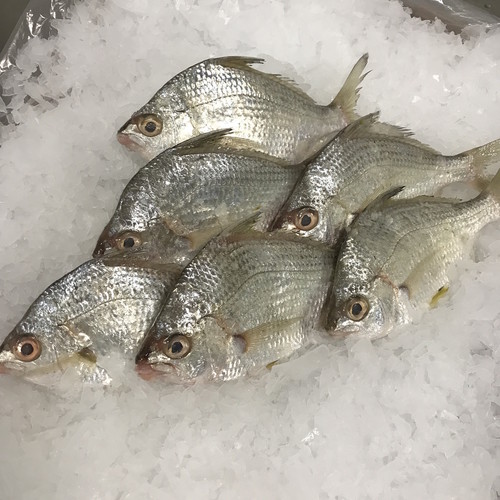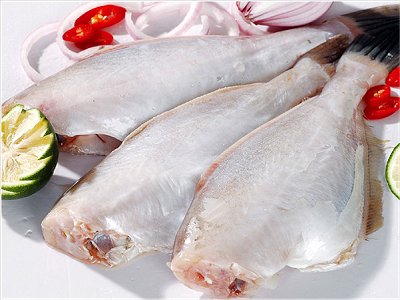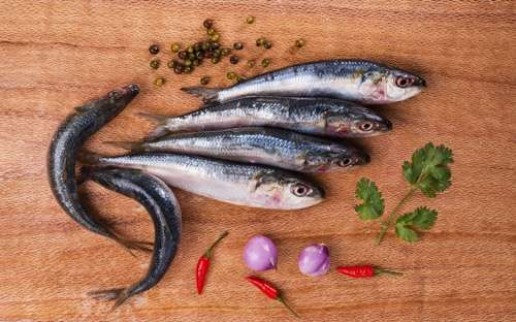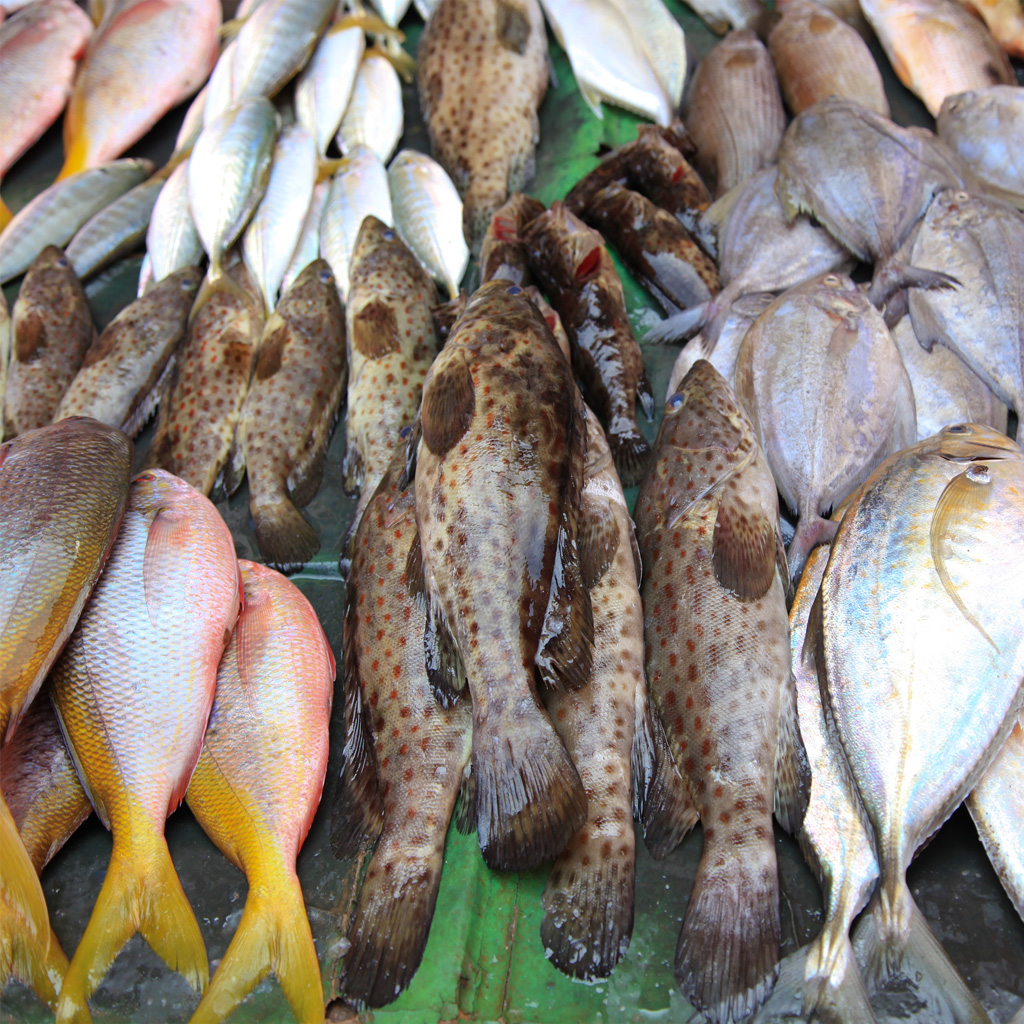Type Of Fishes
Seabream

Identification & Biology: Sea bream are part of the marine sparid fishes. The Sparidae family is also known as porgies. These fish have certain distinctive features that make them easily identifiable. Their bodies are relatively flat. The line from the dorsal area to the front of the fish descends very rapidly giving the face a flattened appearance, especially when viewed in profile. Color varies widely from species to species, mainly depending on water type and environment. In brackish waters, for example, sea bream tend to be darker, with shades of blacks and grays to help the fish blend in with its environment. Some fish, in other areas, even have a bright red appearance, showing how diverse members of the family can be. The front teeth of many sea bream are broad and flat, ideally suited for crushing small crabs and clams.
Other Names: Brim, Tropical Sheepshead, Chopa
Perhaps the most common variety of fish referred to as sea bream is the European sea bream, (Pagellus centrodontus). This fish is mainly silver in color, but with shades of both red and yellow, depending on the individual. It is commonly found in oceans surrounding Europe and is considered to be a temperate-water fish, preferring water that is cool, but not extremely cold.
Catfish:

Scientific Name:
The scientific name of Wells catfish is Silurusglanis. It is classified under the classification of Silurus. It is also called as sheatfish.
Family and History:
This fish is mostly found in Lake Constance. These also found in basins of Baltic, black and Caspian Sea. Size of this fish is about 13 ft that is of 4m. Maximum weight is about 400kg. These are mostly found in freshwater places. They feed on other animals which live in water bodies.
Use: These are taken as food by humans. It is rich in proteins and nutrients.
Lifespan: Lifespan of this fish is about 60 years.
Leather Jacket

Standard Names: There are 60+ species of Leatherjacket and Reef Leatherjacket. They are usually marketed without differentiation, with the exception of the species ‘Ocean Jacket’, which is the most valuable of the commercial species available.
Leatherjackets are found throughout Australian waters and are available year round, though the supply of Velvet Leatherjacket is limited and supply of Ocean Jacket peaks from October to April.
They are caught as bycatch of trap and trawl fisheries in inshore waters as far as the continental shelf. There is also a small trap fishery near Albany in WA. In the south, especially SA, there are specialised fisheries using seines, traps, and line.
Some species of Leatherjacket are imported from SE Asia, usually as frozen fillets. These may come from fisheries with questionable environmental records and should be avoided. Country of Origin labelling is required by law in Australia.
Sardines:

Fish, in general, have omega 3 in them that lowers the risk of stroke, depression, and also some cancers. The DHA and fatty acid in Tilefish will nourish the brain and is a healthy option to include in your diet.


